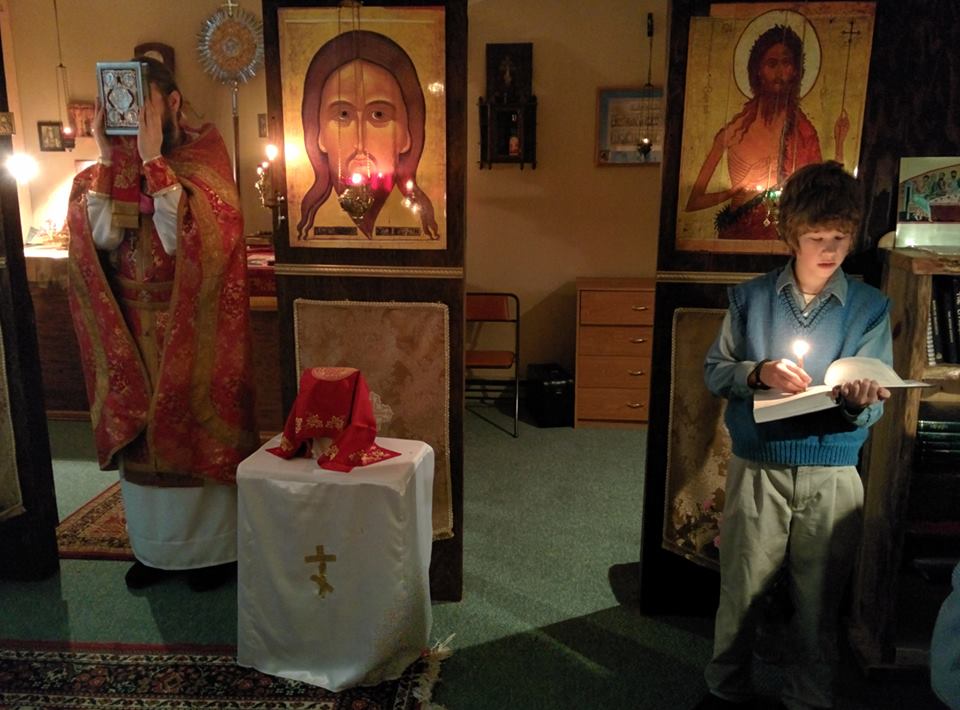
As we work our way through Holy Week, I wanted to share my explanation of the importance of the church calendar that I offered in Rediscovering the Goodness of Creation.
In that book, I shared that the rationale for organizing time spiritually is found in Exodus 13:14 and 23:14-19, where God provided His people with three main feasts as a tangible way to remember what He had done for them. Although the feast of Passover expired when Jesus brought Israel’s exile to an end (a fact hinted at in Jeremiah 16:14-15 and 23:7-8), this does not mean that the people of God are now without any feasts to celebrate. On the contrary, just as our forefathers had the three cardinal feasts of the law (Passover, Pentecost and Tabernacles), Christians also have a number of feasts that celebrate our ongoing salvation. These feasts—celebrations like Pentecost, Pascha or Easter, Advent, Christmas or Nativity, Theophany or Epiphany, to name only a few—proclaim that time itself, once the medium only of death and decay, has become the very medium of our redemption. One of the Christian feasts, Pentecost, was also an Old Testament feast, though it has been transformed by the gospel to take on a fuller meaning. And just as our forefathers had numerous supplementary holy days between their feasts like the Day of Atonement, so the church has numerous saints’ days that we can celebrate.
These holidays are not merely reminders about spiritual truths; rather, these holidays are a tangible way for Christians to live through the story of redemption every year and to sacramentally participate in the realities they commemorate. This idea of sacramental participation goes back to the feasts of the Old Testament, particularly Passover. The annual celebration of Passover was always more than simply a reminder that God had delivered His people out of Egyptian bondage. Rather, the faithful believed that through the Passover liturgy, they were mystically participating in those original events. Through the ritualistic reenactment of the Passover night, the ancient past was brought forward into the present.
Jesus celebrated the Passover in the event we call the Last Supper, as faithful Jews and Israelites had been doing for hundreds of years. Significantly, this occurred on the night before His death when Jesus, the new Passover lamb, rescued Abraham’s descendants from their final bondage. By mysteriously participating in the original Passover, Christ was able to transform the celebration in light of His own dawning victory over slavery and exile.[i] Taking the Passover bread and wine, Christ declared that it was His body and blood shed for the remission of sins and for the initiation of a new covenant (Mt. 26:26-29). When Christians thereafter celebrate the Last Supper, or the Eucharist as it later came to be called, they participate in Christ’s victorious death, the ultimate Exodus out of bondage. Just as the annual Passover liturgy was a participation in the original Passover meal, so the Christian Eucharist became a participation in the new Exodus made possible by Christ’s sacrificial death.
Many Christians have a hard time understanding this type of liturgical participation, and so they end up with weird theories, such as the theory held by many Protestants that communion is simply an illustration and nothing more, or the even stranger Protestant theory which says that Catholics and Orthodox believe Christ is being re-sacrificed every time Communion is served. Much of this confusion arises because we have a different understanding of time than the ancient Hebrews. When the Hebrews celebrated the Passover every year, the symbolism and typology enabled them to spiritually participate in those original events, even though in purely secular time the Passover was in the distant past. The ancient Hebrews did not believe that the Passover repeated itself hundreds of times throughout linear history, just as Catholics and Orthodox do not believe that Christ is re-sacrificed anew every time a priest serves the Eucharist. Rather, the doctrine of liturgical participation is built on the notion that a specific punctiliar event in the distant past can come rushing forward into the present, and that through “reminiscence” (anamnesis in Greek), those events can be “made present.”
The Canadian philosopher Charles Taylor articulated the concept of “making present” by saying that “The original Passover in Egypt, and the last supper, are brought into close proximity by typology, although they are aeons apart in secular time.”[ii] If this is true, then it challenges how we think of time. Consider the following question: what is closer to the original Easter: January 3rd 1975, or Easter Sunday 2013? According to human reason, we would say that January 3rd 1975 is thirty-eight years closer to the original Easter than Easter Sunday (or Pascha, as I prefer to call it) in the year 2013. But that is a secular way of approaching time. When our thinking has been informed by a Judaeo-Christian worldview, we understand that Easter Sunday is actually “closer” to the events of Christ’s resurrection, though on a different axis from secular time.
The early Christians grasped something of this mystery in their understanding of Real Presence: the teaching that the Communion elements mysteriously participate in Christ’s body and His original sacrifice. Although Real Presence became controversial after the sixteenth century, the principle behind it pervades the entire liturgical year, as Jesus’ followers are caught up to participate in the key events of salvation history. For example, Christ’s temptation in the wilderness is re-enacted during Lent when Christians fast and give particular attention to the struggle against temptation. During Advent or Nativity fast, we re-enact and participate in the long period during which our forefathers painfully waited for the Messiah, even as we are now waiting for His second coming. Advent culminates in the Christmas, which celebrates the incarnation, that great event when God became man. After Christmas comes the season of Theophany or Epiphany, which recalls the coming of the Magi and the revelation of Christ to the Gentiles. During Lent the church remembers Christ’s sufferings, both in the wilderness and finally on the cross. All the events of Christ’s final week are re-enacted during Holy Week. Lent and Holy Week culminate in the Paschal mysteries of Easter, when Christ rises from the dead, defeating death once and for all.
The ancient prayers and hymns that accompany these fasts and feasts build on the same reality that the Hebrews understood in their Passover celebrations: under the right conditions, great events from the past are brought into conjunction with the present, enabling worshipers to participate in spiritual realities that transcend their immediate location in time and space.

